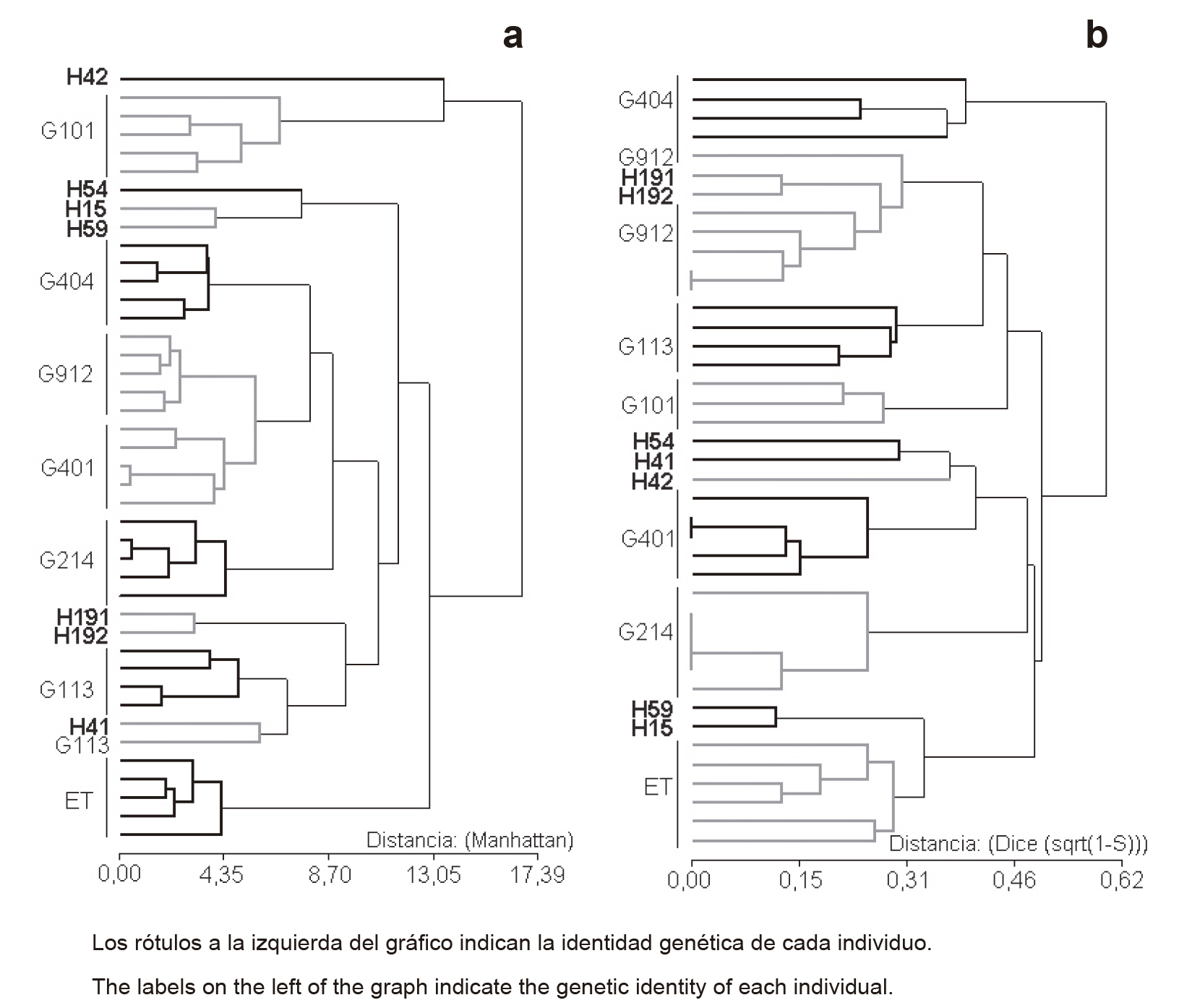Utilization of morphological and AFLP molecular markers in the identification of native and cultivated germplasm of Elymus scabrifolius (Poaceae)
Keywords:
Elymus, germplasm identification, morphology, molecular markers, AFLPAbstract
Elymus scabrifolius is a South American perennial grass exhibiting great potential as a forage resource, especially for environments with edaphic limitations. In the present work we use morphological traits and AFLP molecular markers to genotypically identify six E. scabrifolius accessions, one commercial cultivar and seven artificial hybrids of this species. Both types of marker systems resulted in an accurate differentiation of the interrogated E. scabrifolius germplasm in the dendrograms. Moreover, relationships between the tested germplasm tend to vary according to the type of marker system used. Principal Component Analysis was used to identify the traits that best described the morphological variation. The morphological study revealed that almost all hybrids were different from their parents, with exception of one hybrid that was clustered with their own male parent. In the AFLP marker analysis, all the hybrids were clustered with one of their own parents. However, hybrid origin of those individuals was verified by the presence of paternal bands and polymorphic bands. In conclusion, the use of different methodologies to characterize and analyze E. scabrifolius materials has the potential to become of great benefit for the efficient management of germplasm collections and also for their utilization in breeding programs.

Downloads
Published
Issue
Section
License

This work is licensed under a Creative Commons Attribution-NonCommercial-ShareAlike 3.0 Unported License.
Aquellos autores/as que tengan publicaciones con esta revista, aceptan las Políticas Editoriales.


